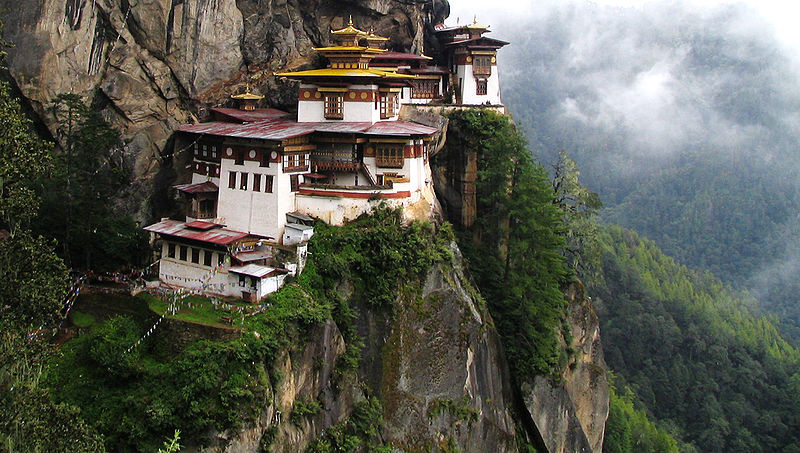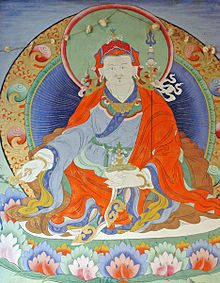Paro Taktsang (spa phro stag tshang / spa gro stag tshang), is the popular name of Taktsang Palphug Monastery (also known asThe Tiger's Nest), a prominent Himalayan Buddhist sacred site and temple complex, located in the cliffside of the upper Paro valley,Bhutan. A temple complex was first built in 1692, around the Taktsang Senge Samdup (stag tshang seng ge bsam grub) cave where Guru Padmasambhava is said to have meditated for three months in the 8th century. Padmasambhava is credited with introducing Buddhism to Bhutan and is the tutelary deity of the country. Today, Paro Taktsang is the best known of the thirteen taktsang or "tiger lair" caves in which he meditated.
| Monastery information | |
|---|---|
| Location | Paro Valley, Paro District, Bhutan |
| Founded | 8th century as a meditation cave (formally built as a monastery in1692). |
| Date renovated | 1958 and 2005 |
| Type | Tibetan Buddhist |
| Sect | Drukpa Kagyu and Nyingma |
| Dedicated to | Guru Padmasambhava |
| Architecture | Bhutanese |
Background and legends
According to the legend related to this Taktsang (which in Tibetan language is spelt (stag tshang) which literally means "Tiger's lair", it is believed that Padmasambhava (Guru Rinpoche) flew to this location from Tibet on the back of a tigress from Khenpajong. This place was consecrated to tame the Tiger demon
An alternative legend holds that a former wife of an emperor, known as Yeshe Tsogyal, willingly became a disciple of Guru Rinpoche (Padmasambahva) in Tibet. She transformed herself into a tigress and carried the Guru on her back from Tibet to the present location of the Taktsang in Bhutan. In one of the caves here, the Guru then performed meditation and emerged in eight incarnated forms (manifestations) and the place became holy. Subsequently, the place came to be known as the "Tiger's Nest".
The holy hill is drawn in the backdrop with four faces painted with different colours – the east face is in crystal white colour, the south face is yellow, the west is in red colour and the north has green colour. The palace has four sides and eight corners with its lower and upper tiers adorned with jewels. The courtyard with four enclosures is said to represent four kinds of conduct. The walls are built with bricks, balconies have been bejewelled with religious symbols. The ambience is shown in the form of wishing trees, fountains of the water of life, rain bows in five colours with cloud formations and light emanating from lotus flowers. The palace is also shown with a throne with eight corners fully and curiously bejewelled. Padmasmbahva is shown sitting on a pure stalk of lotus emitting divine energy appearing "divine, charitable, powerful or fierce".
Courtesy : Wikipedia,
www.keralites.net         |
__._,_.___
KERALITES - A moderated eGroup exclusively for Keralites...
To subscribe send a mail to Keralites-subscribe@yahoogroups.com.
Send your posts to Keralites@yahoogroups.com.
Send your suggestions to Keralites-owner@yahoogroups.com.
To unsubscribe send a mail to Keralites-unsubscribe@yahoogroups.com.
Homepage: www.keralites.net
To subscribe send a mail to Keralites-subscribe@yahoogroups.com.
Send your posts to Keralites@yahoogroups.com.
Send your suggestions to Keralites-owner@yahoogroups.com.
To unsubscribe send a mail to Keralites-unsubscribe@yahoogroups.com.
Homepage: www.keralites.net
.
__,_._,___








No comments:
Post a Comment